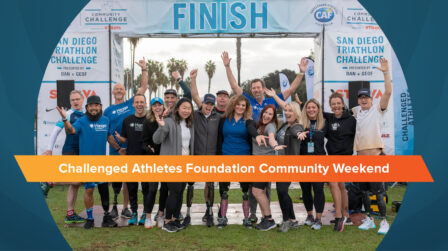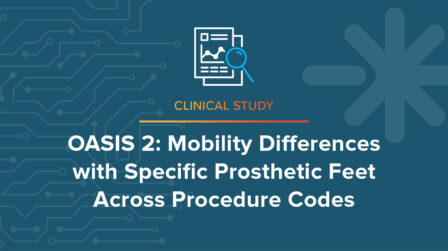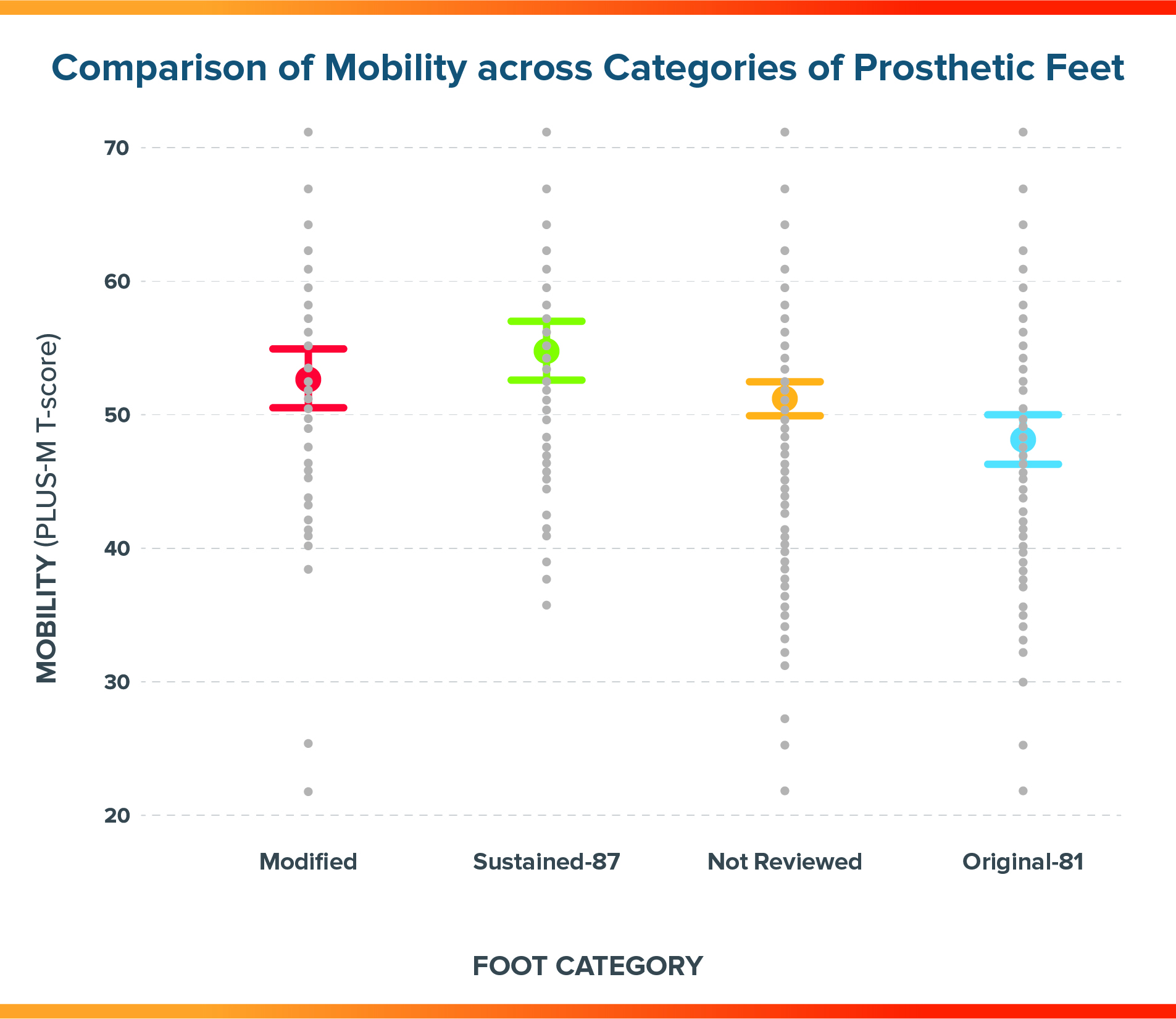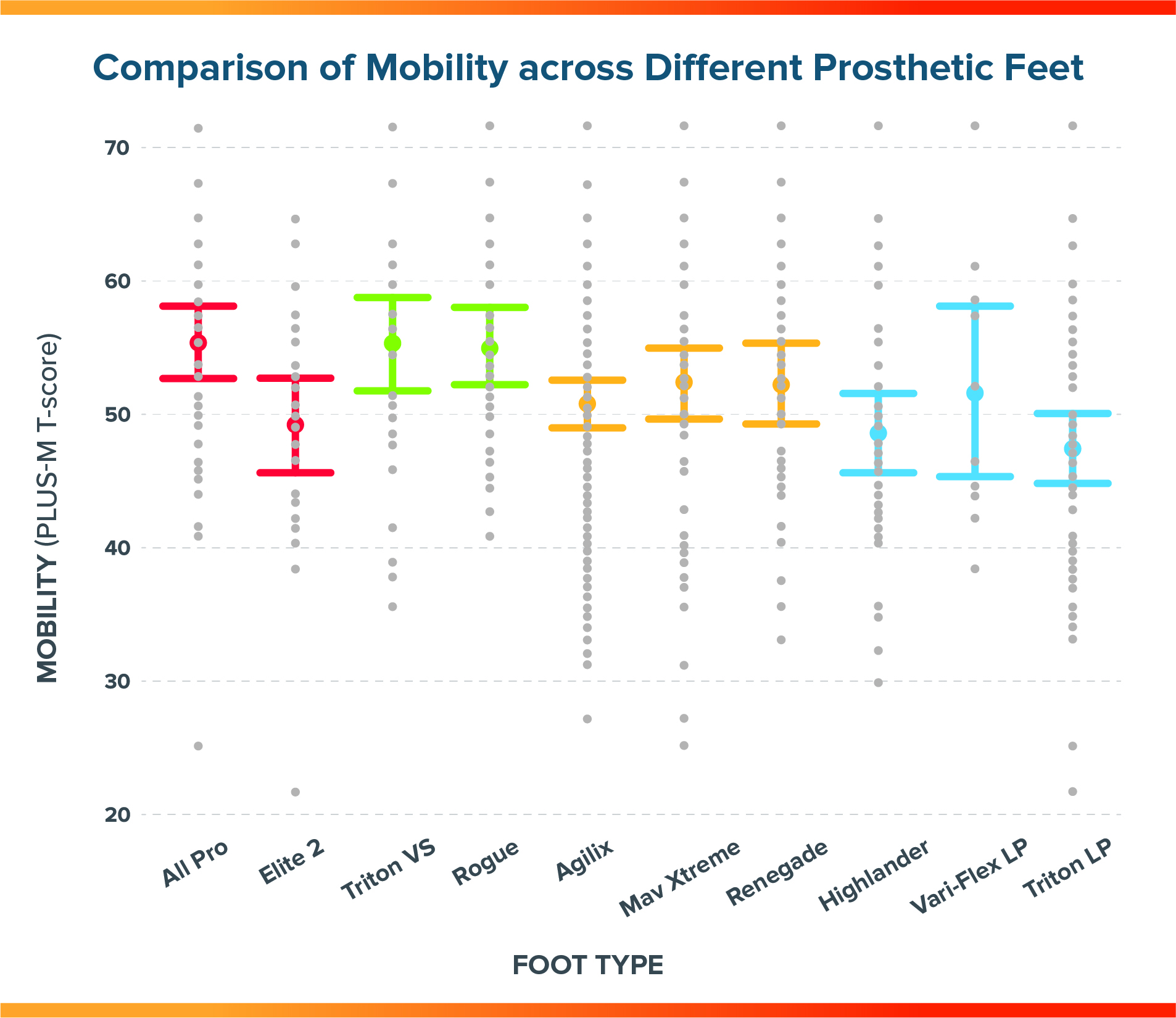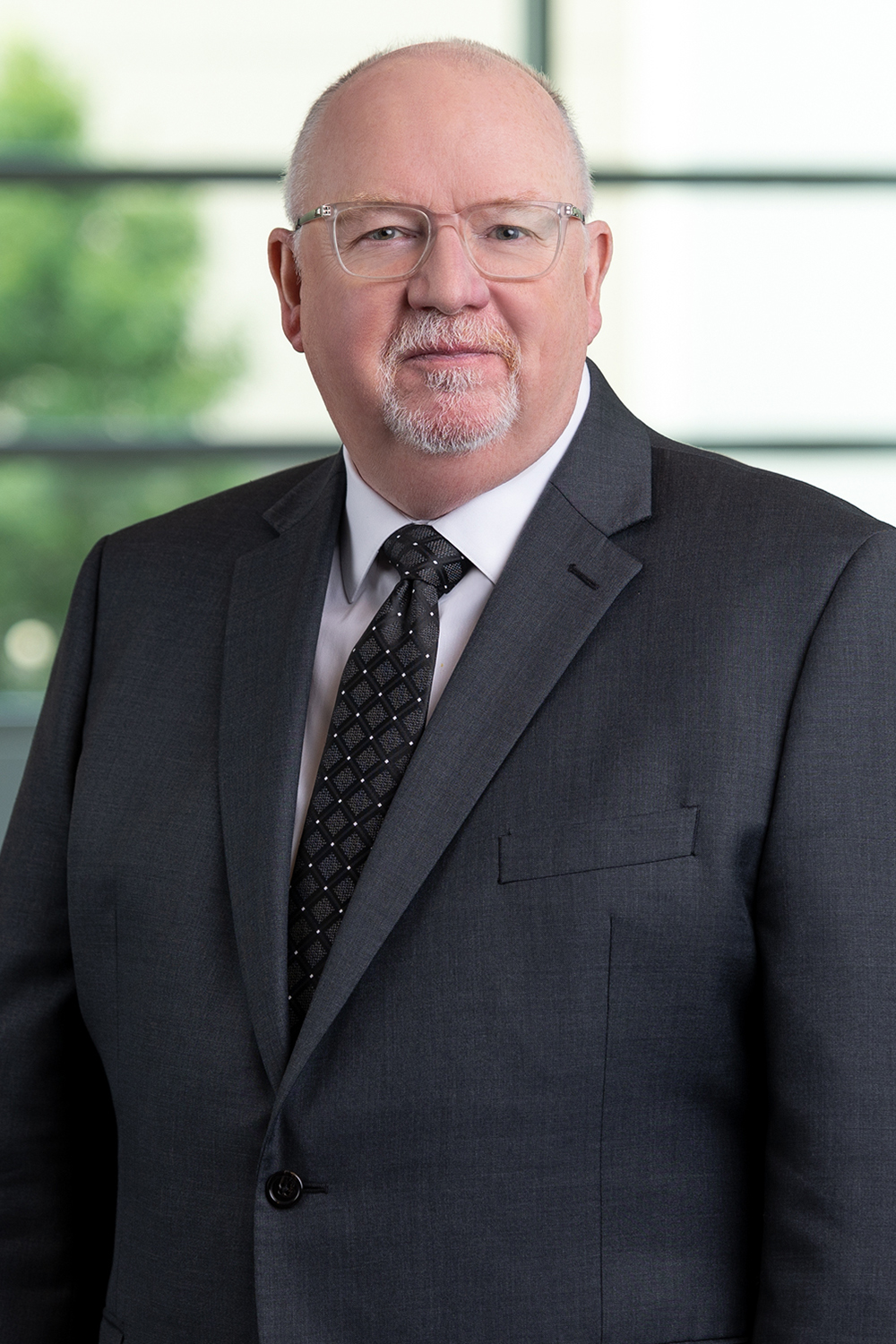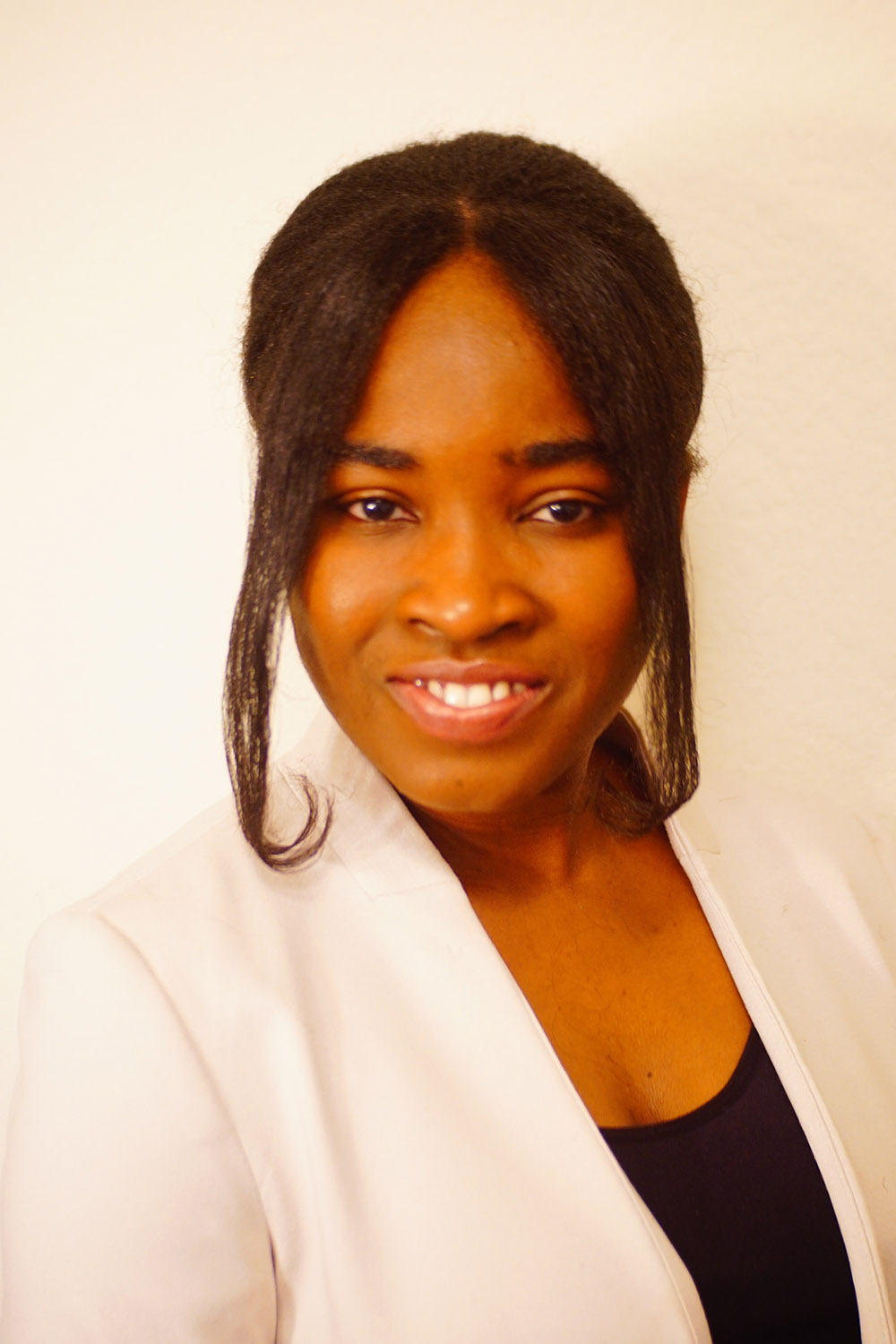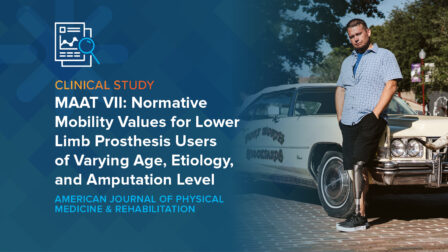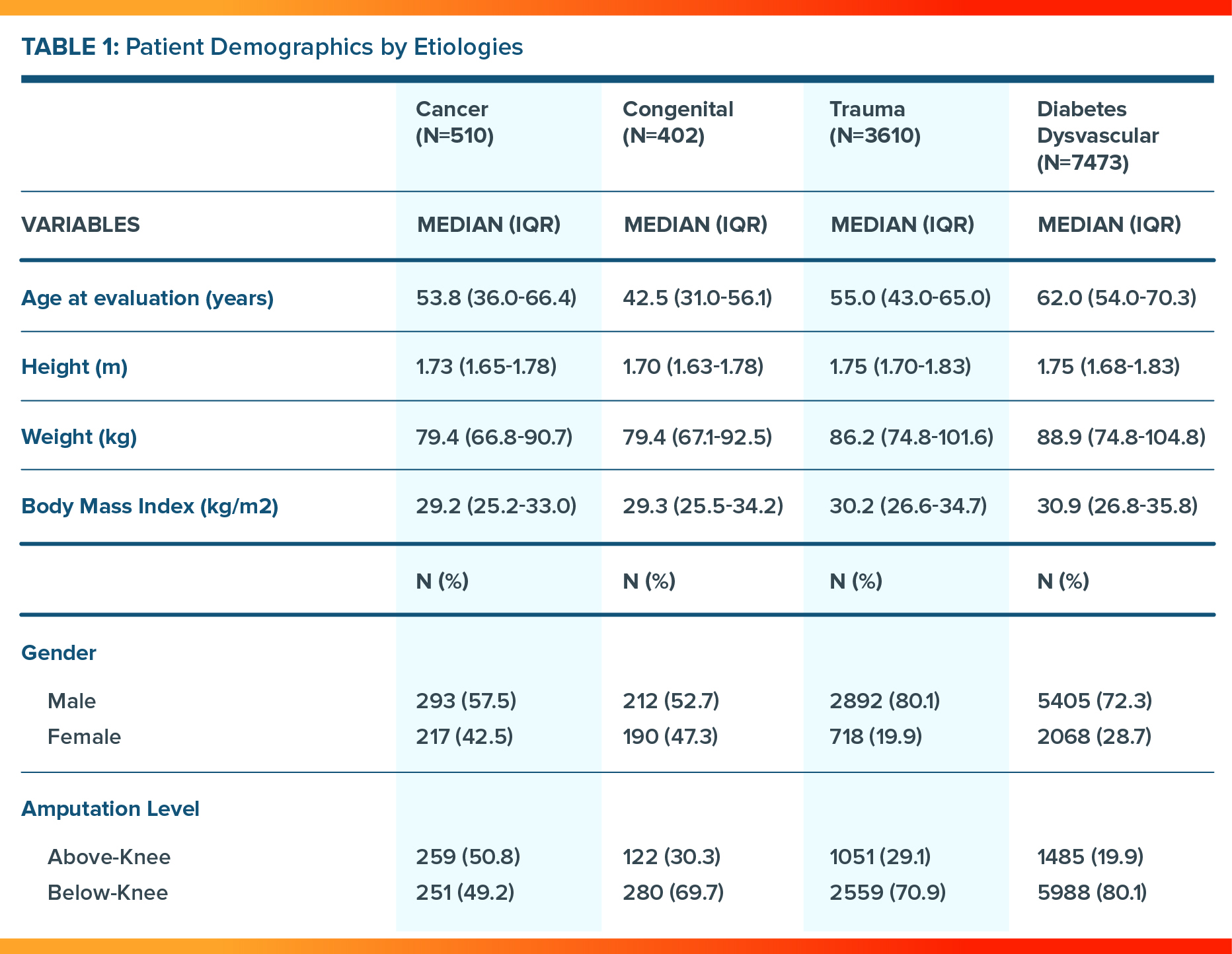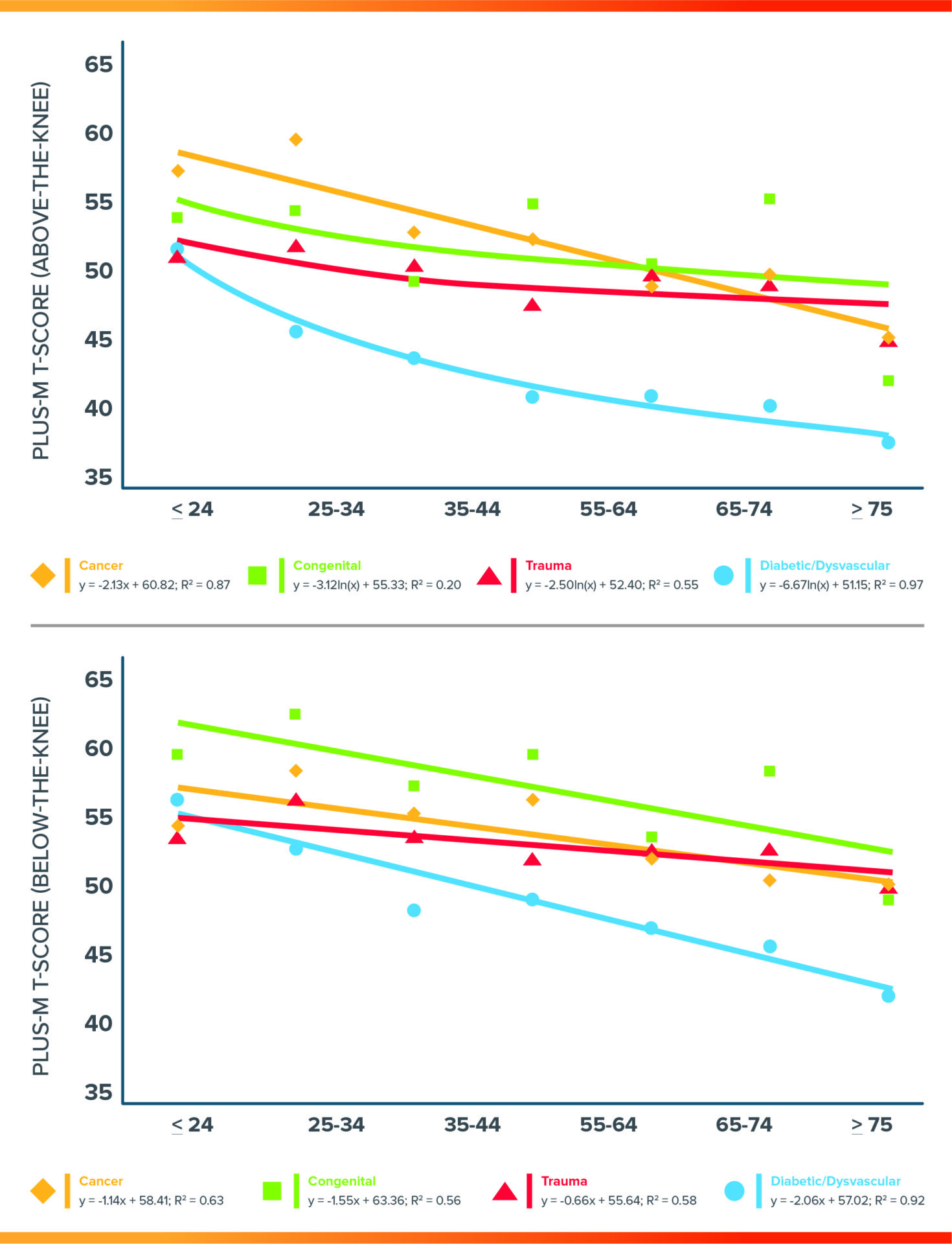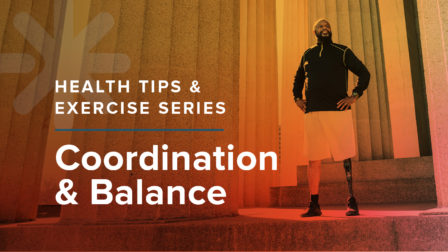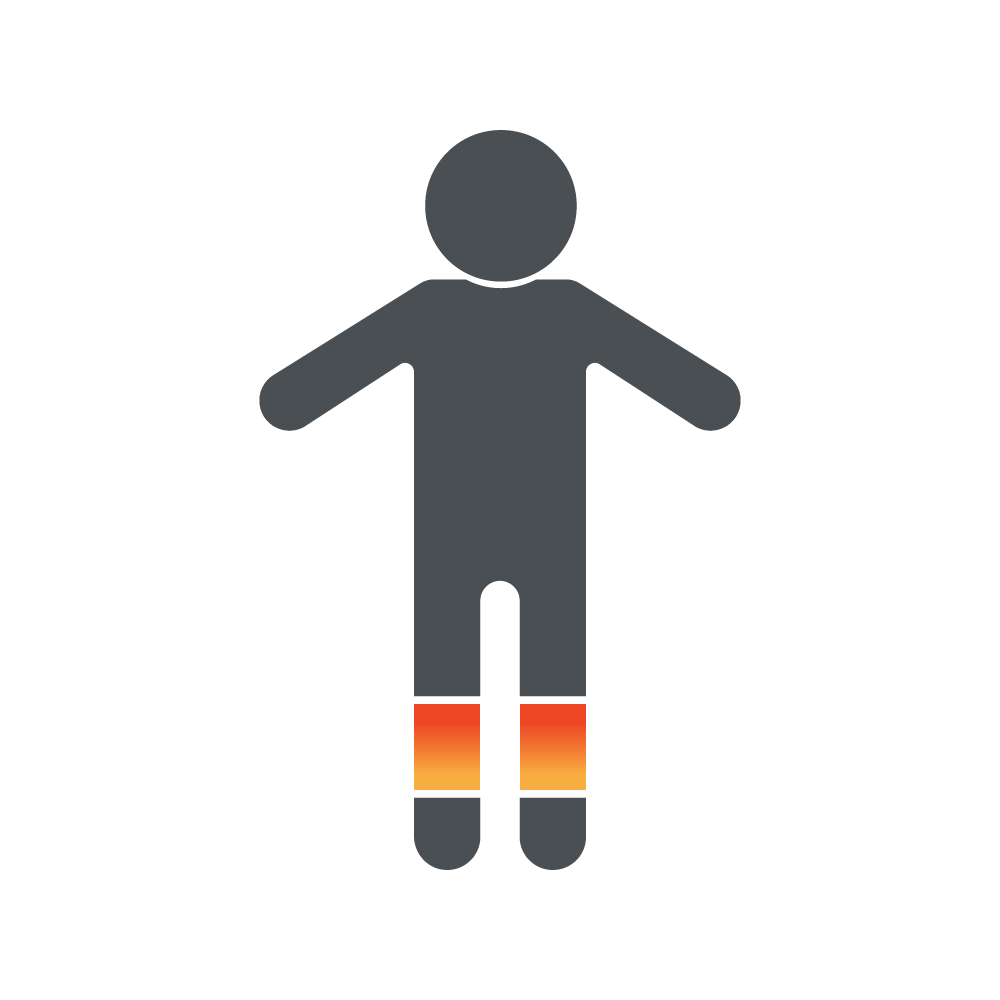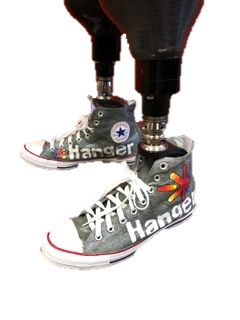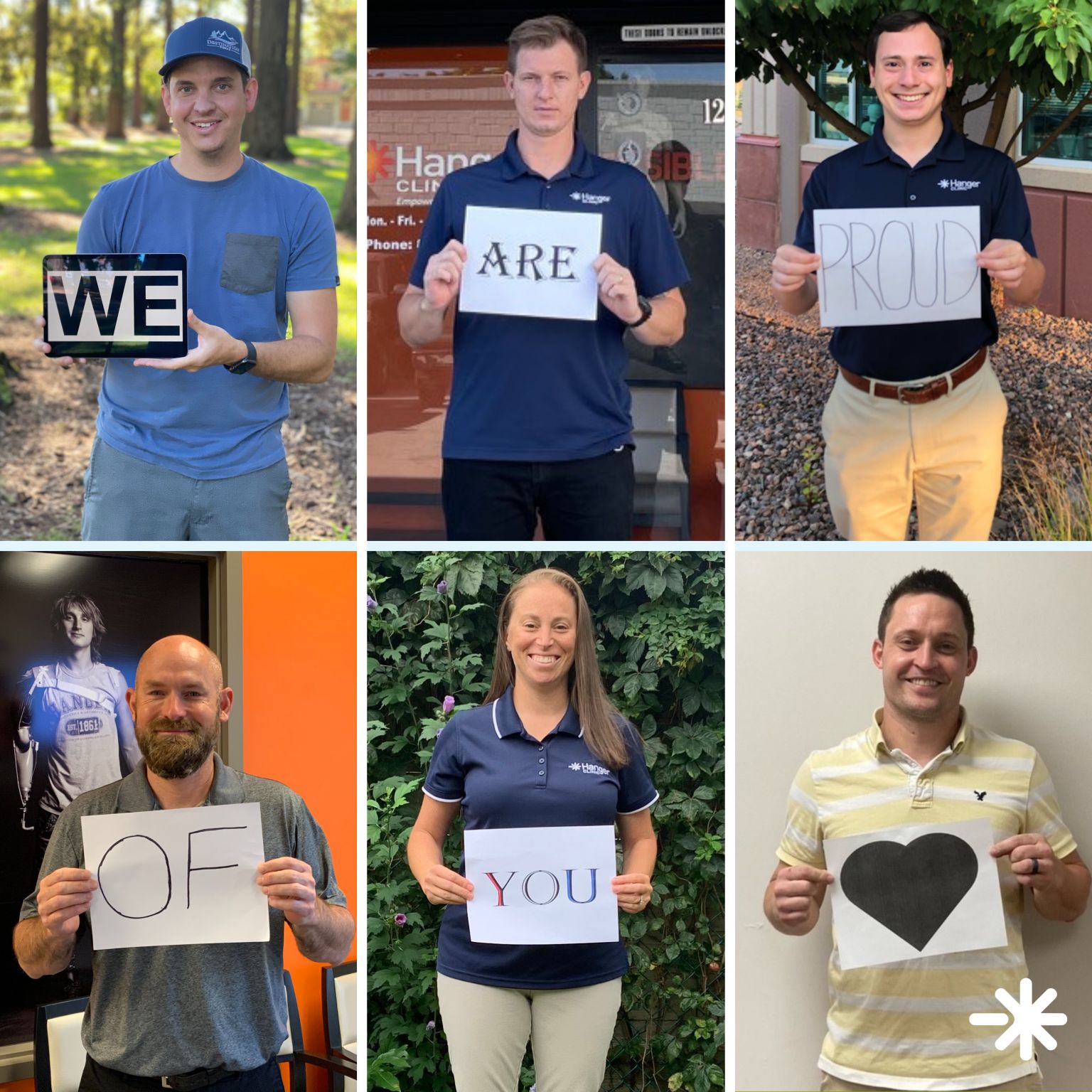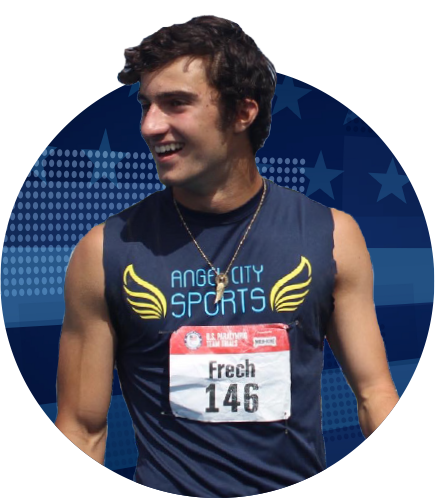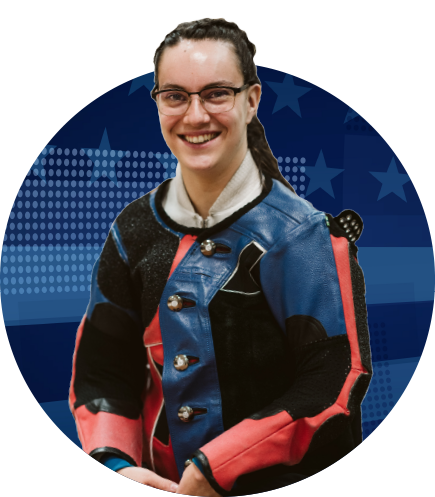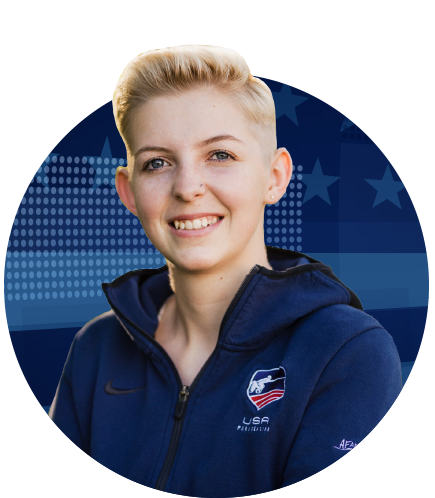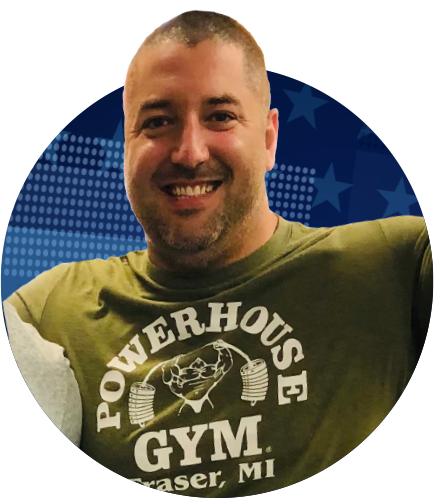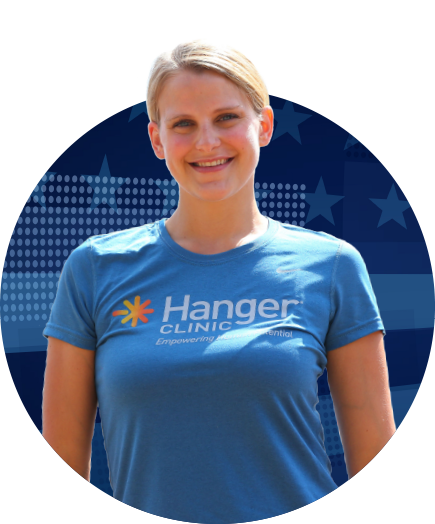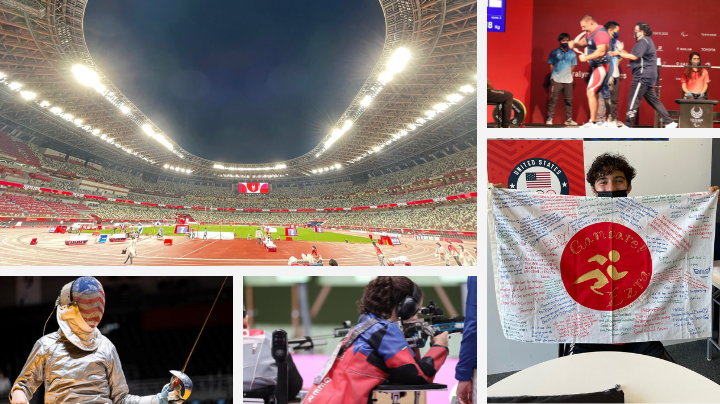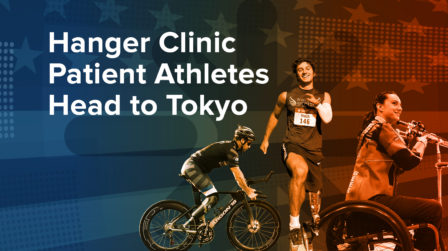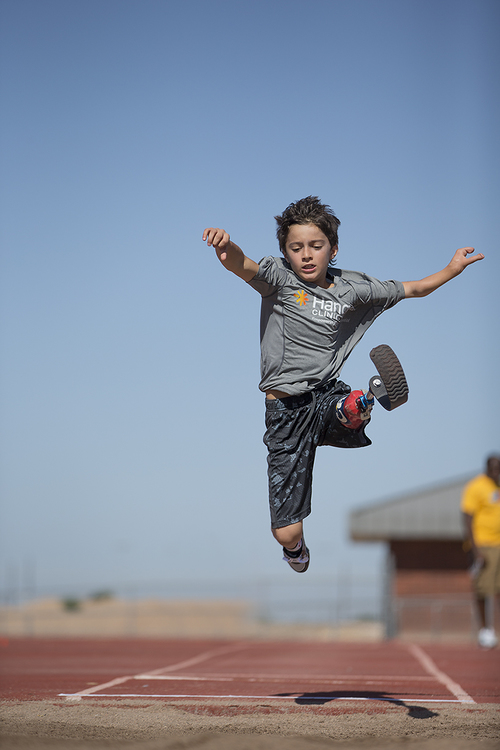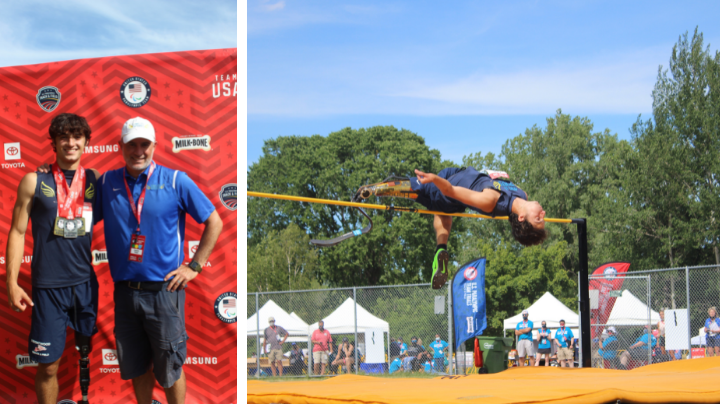Hanger Clinic patients, families, and clinicians recently participated in the annual Challenged Athletes Foundation (CAF) Community Weekend. This event provides attendees an opportunity to participate in adaptive sports, meet new friends and mentors, and have fun. We followed Hanger Clinic teams at this event to learn more about them and their experience during CAF Community Weekend.
CAF Annual Grant Program
CAF’s flagship grant program aims to remove the barriers that exist between adaptive athletes and their pursuit of sport and fitness. Individuals with permanent physical disabilities are eligible to apply for the sports expense grant or equipment grant.* Deadline is November 4, 2022.
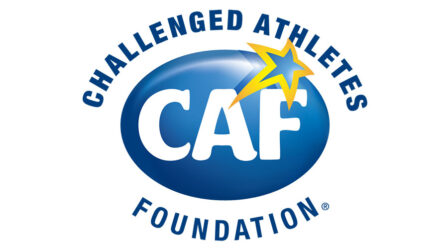
Meet the Teams
Hanger Clinic Team
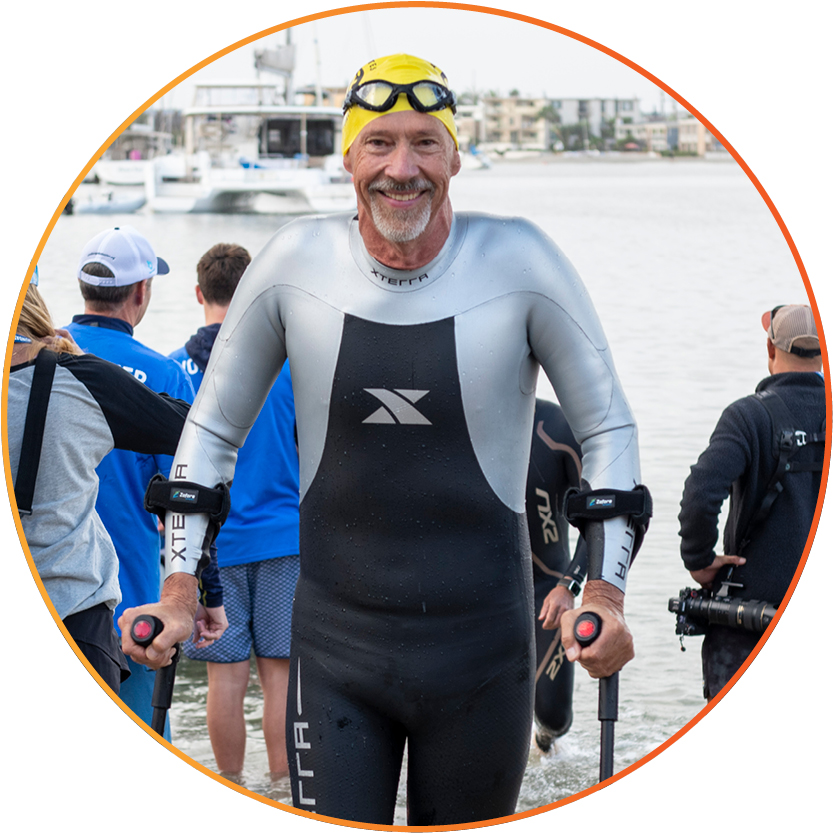
Bruce Mezan
Swim/Triathlon
Bruce Mezan uses a below-knee prosthesis after being hit by a drunk driver on his motorcycle. Bruce now speaks to high school students and works with Mothers Against Drunk Driving and news organizations to highlight the dangers of driving under the influence. He shares his story and insists that tragedies stemming from drunken driving are preventable.
Bruce decided to participate in the CAF Community Challenge for the simple reason that he believed the event could improve his life, and he could possibly have a positive impact on others.
“The athletes all called on their strength to test their abilities and push their limits. This fortitude was a very beautiful thing to witness. I was also affected deeply by the running clinic. I can’t help but think about how encouraging it was for the children to engage with so many others in similar circumstances. It was fun to watch and it was clear that they were uplifted. I suddenly realized that being part of this huge community of support was important to me.”
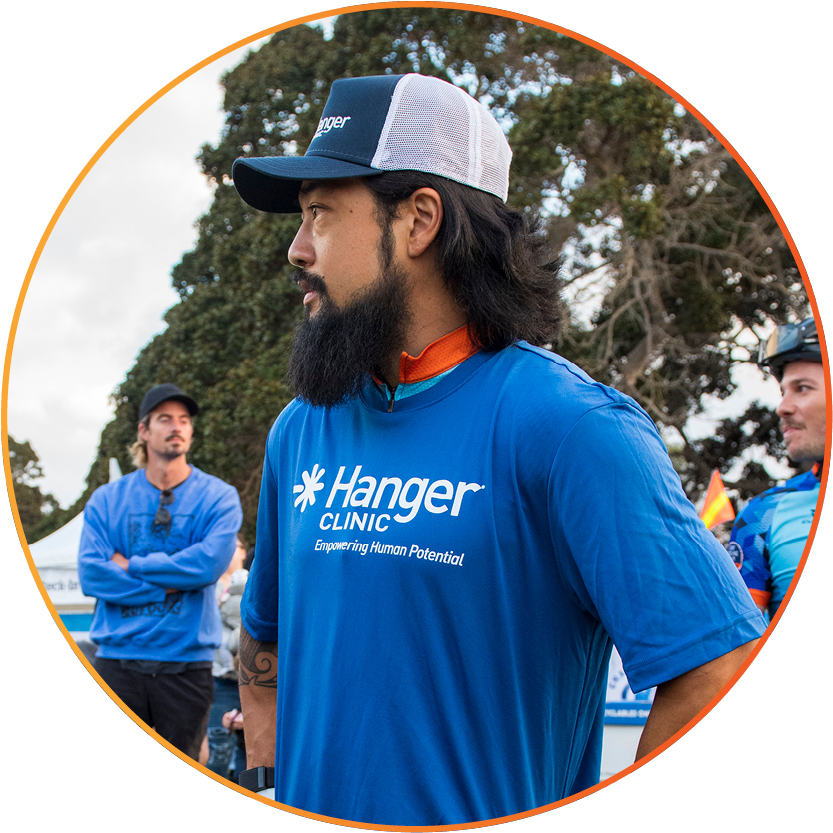
Jason Malvar
Bike
After losing his left leg below-the-knee in a motorcycle accident, Jason Malvar has been working hard to recover. With his positive mindset and determined attitude, Jason is getting back to doing what he loves – running, biking, and staying active with his family.
“I wanted to participate in CAF to do amazing things with other inspiring athletes. I also wanted to face and overcome my own challenges, and support other challenged athletes by showing them hard things are possible to overcome. I myself had prior doubts and have endured difficulties along the way, but never allowed myself to give up. As a challenged athlete, you don’t have to take on this journey alone. The CAF Community Weekend is truly indicative of that.”
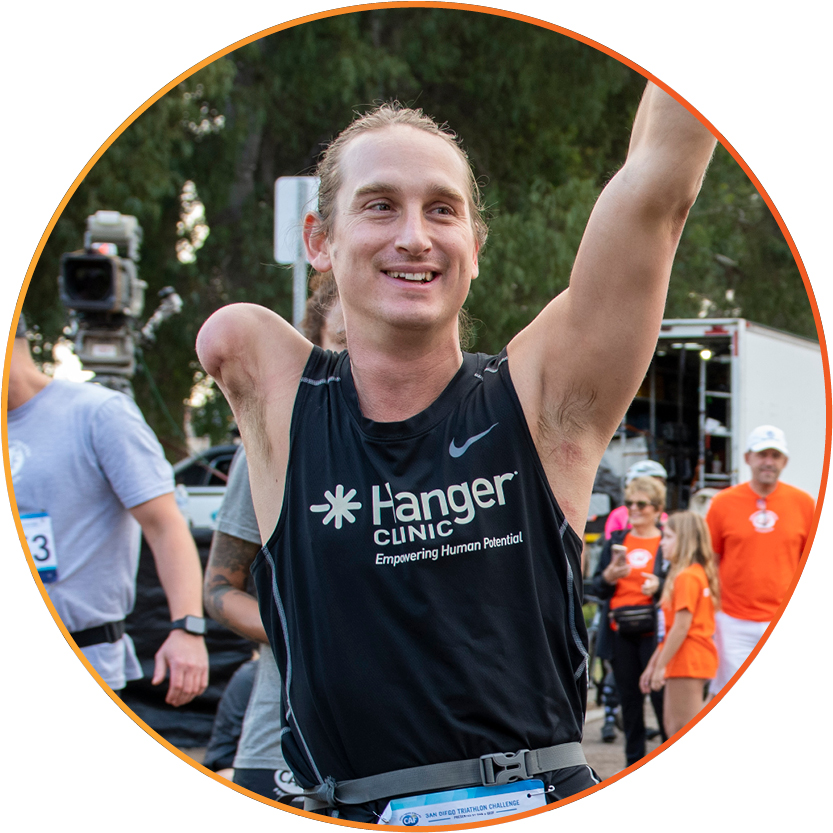
Cameron Clapp
Run
After being struck by a train and instantly losing both legs above-the-knee and his right arm at the shoulder, Cameron Clapp was told by doctors he would never walk again. He proved everyone wrong by walking independently with two prosthetic legs just five months after the accident. Now, Cameron travels the country sharing his incredible survival story with fellow amputees, teens/adults, and members of the medical community. He is passionate about adaptive sports and supporting fellow athletes.
“Supporting the Community Challenge Weekend and San Diego Triathlon Challenge was a great honor and privilege. I was extremely excited to participate in the Community Challenge this year because it was my 20th year attending, and I participated in the fully adaptive Hanger Clinic relay team where I had the opportunity to run the 10 mile for my first time at the CAF triathlon.
My most powerful takeaways at this event were the incredible human connections experienced by the Challenged Athletes coming together through sports, great camaraderie, teamwork, and pushing myself to the limits to finish strong and achieve the 10 mile run.”
Hanger Clinic Team Escondido
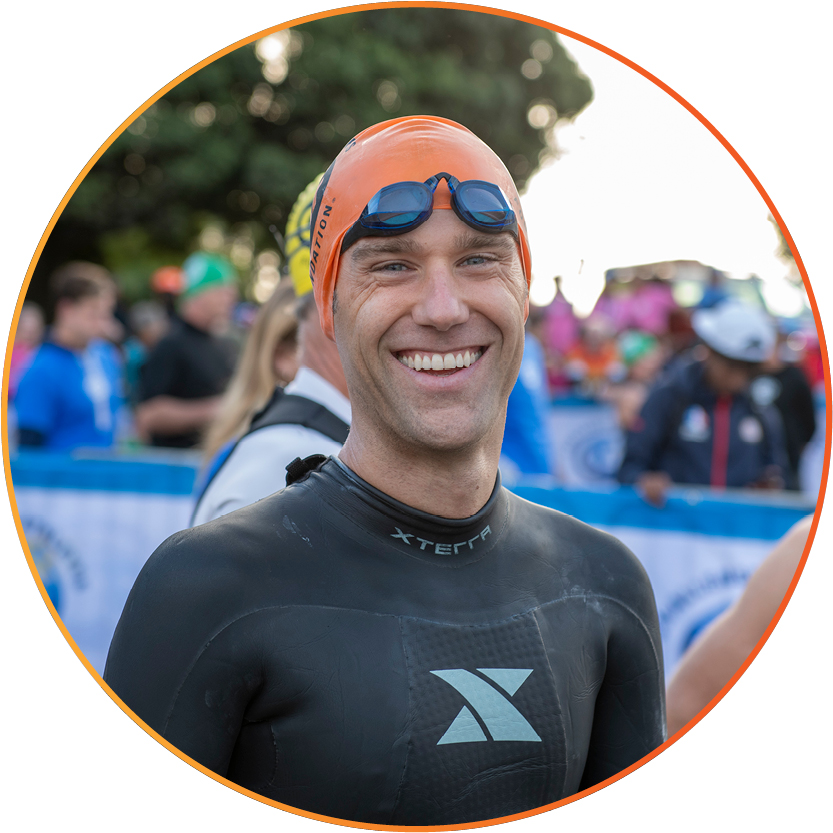
Kyle Ryan
Swim
Dr. Kyle Ryan is a board-certified Physical Medicine and Rehabilitation (PM&R) specialist at Rady Children’s Hospital-San Diego and an assistant clinical professor at UC San Diego School of Medicine. He is passionate about providing compassionate care for patients with diverse rehabilitation needs, with an emphasis on cerebral palsy and spasticity management.
Growing up in the triathlon community, Kyle has always been inspired by the work that CAF does and was excited about the chance to participate with the Hanger team in this amazing event. Now, as a physiatrist, he cares for adults with physical impairments and supports the importance of movement for individuals of all abilities.
“It was such a pleasure to meet the entire team representing Hanger at the CAF Community Challenge. The energy at the event was so infectious – huge smiles on so many faces, and pure camaraderie palpable everywhere. It’s amazing to see the hard work put in by so many people coming together in such a positive way. I can’t wait to participate again!”
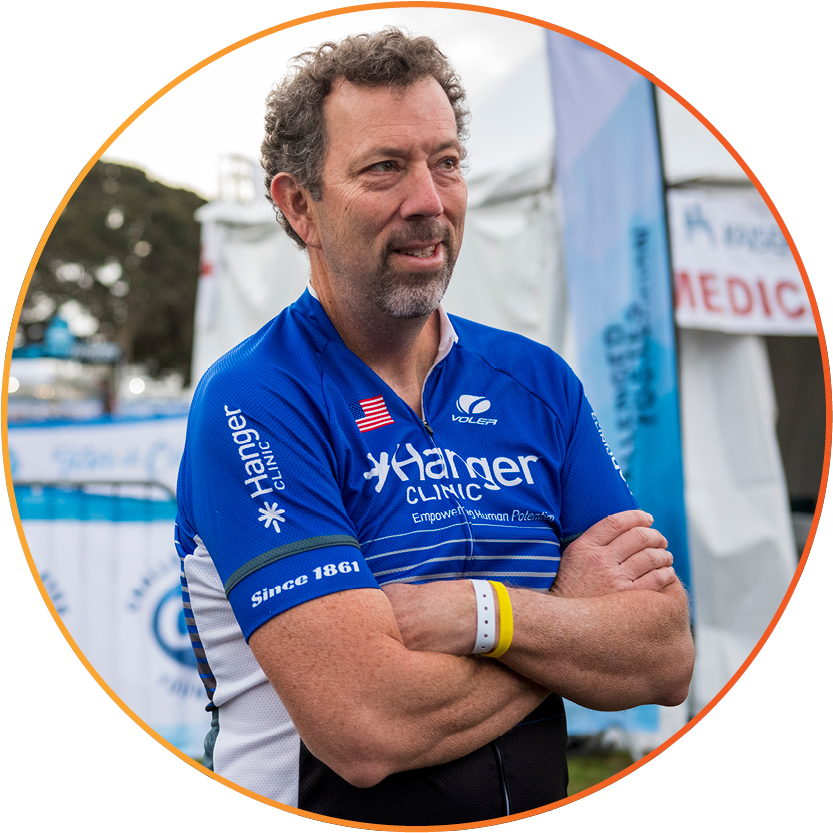
Steve Tregoning, CPO
Bike
Steve Tregoning, CPO is an ABC-certified prosthetist/orthotist and Area Clinic Manager for Hanger Clinic in downtown Escondido and the North San Diego region. He is dedicated to providing patients with innovative orthotic and prosthetic technologies and superior care to help them regain their independence and pursue the activities they love.
“I have participated in the CAF triathlon for over 20 years. Despite working with challenged athletes on a daily basis as a prosthetist/orthotist, I am still blown away by the event and thankful for the opportunity to participate. I would like to think that I have made a difference in my patient’s lives through my work. In reality, I feel like I am the blessed one and can’t imagine spending the day with anyone else. I look forward to 20 more years in the field.”
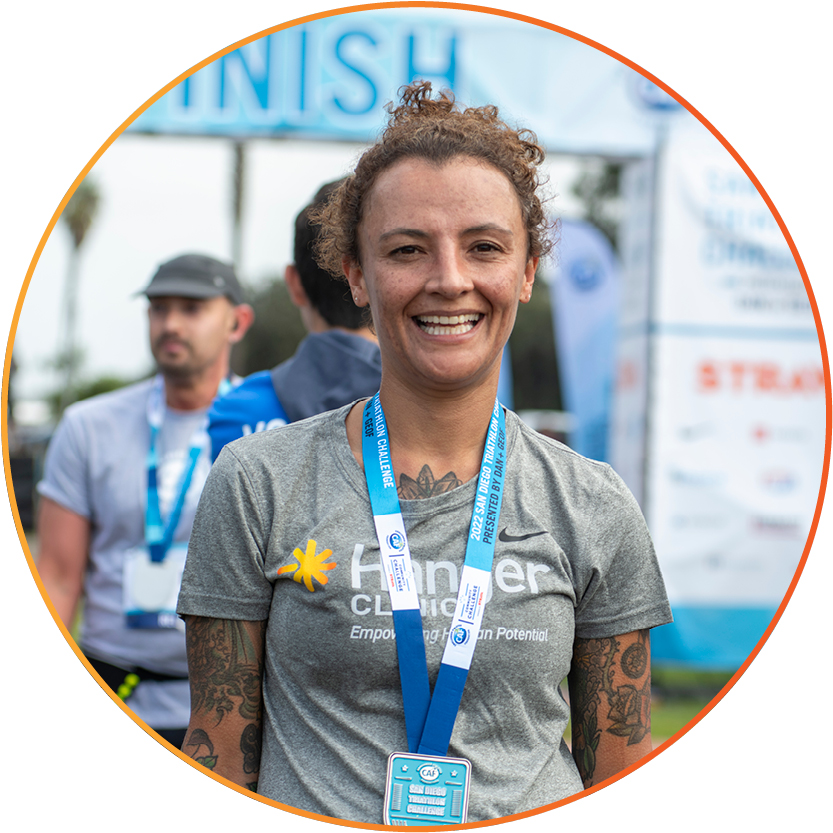
Jennifer Johnson
Run
Jennifer Johnson is a registered nurse who has a passion for showing up, meeting people where they are, and being of service.
“I was excited to participate in the CAF Community Challenge to support a special bilateral above-knee amputee I love. As a participant in the event, I experienced so much positive energy and liveliness from participants. My two big takeaways were to smile and always keep going.”
Hanger Clinic Team Brady

Karen Thomas
Run
Karen Thomas is the West Zone Supply Chain Management Leader for Hanger and a volunteer worship team vocalist. Her love for music started before she could walk listening to her father play the piano. From the time she was in elementary school, she was playing the flute and singing in choirs. She began singing with Inside Out, later joined the Roni Lee Group, and has worked with several celebrity artists.
She served in the Navy as a Radioman, was one of the first women to serve aboard an aircraft carrier, and was in the 2nd wave of females to service on any ship, which at that time was the USS Lexington, otherwise known as “The Blue Ghost” from WWII. Karen believes in the power of sports to empower lives, heal individuals, and unite the world, especially in these times of crisis and conflict.
“As a CAF supporter, we create opportunities for challenged athletes to be involved with adaptive sports, fitness, community connections, and inclusion in society’s health and wellness activities. Having the opportunity to participate with challenged individuals competing in any sport they desire brings joy to my heart.”

Lee Cardon, CPO
Bike
Lee Cardon, CPO is an ABC-certified prosthetist/orthotist for Hanger Clinic in Rancho Mirage, California. He uses a below-knee prosthesis after being hit by a drunk driver while riding a motorcycle. He always enjoyed riding a bike as a kid, but started cycling regularly 20 years ago to get more exercise and become healthier. Lee attended his first SDTC Triathlon Challenge at that time, and was inspired to participate in triathlons and compete in criteriums and road races, some of them riding alongside Olympic gold medalists. He went on to finish a half Ironman Triathlon and even finish 2nd place in his age group at his local Sprint Triathlon.
“I have always looked forward to coming back to the CAF Community Challenge since first participating nearly 20 years ago. It inspired me to get into triathlons and other competitive cycling events. As an athlete and a prosthetist, I am amazed to see what these athletes can accomplish with the right equipment, prosthetics, and sheer determination.”
Challenged Athletes Foundation
Millions of individuals living with physical challenges do not have access to the critical adaptive sports equipment and programming needed to be active. Since 1994, the Challenged Athletes Foundation has been committed to creating opportunities so individuals with physical challenges can live full, healthy, and active lives.
Request a Free Evaluation
If you or someone you love are looking for personalized prosthetic care following amputation, get in touch with a board-certified prosthetist at a Hanger Clinic near you.
*Restrictions may apply. See the CAF Annual Grant Program full eligibility requirements.

